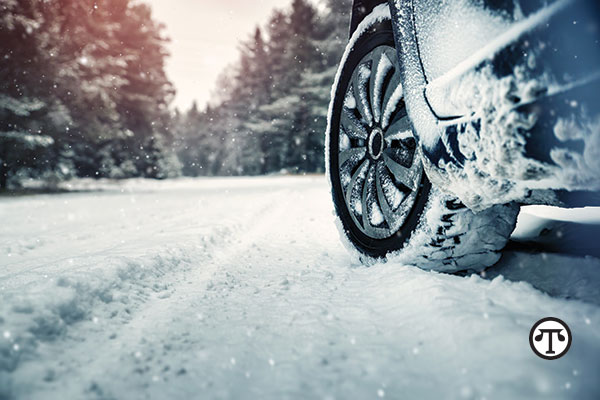
(NAPSI)—When the weather turns cooler, it’s a hot idea to prepare your car for hazardous conditions.
Here are five tips that can help you outsmart winter:
- Plan your trip. Check the weather, road conditions and traffic along your route. Allow plenty of time so you don’t have to rush. Familiarize yourself with directions and maps before you go, even if you use a navigation app, and let others know your route and anticipated arrival time.
- Carry a safety kit. It should include a snow shovel, broom and ice scraper for getting mud, snow and ice out of your way and off your windshield; abrasive material such as sand or kitty litter, in case your vehicle gets stuck in muck, ice or snow; jumper cables; a flashlight so you’re not left in the dark; warning devices such as flares and emergency markers so you can be seen on the side of the road; blankets for protection from the cold; a cell phone with charger; and bottled water so you stay hydrated.
- Check your tires. Inspect your tires—including the spare—at least monthly and before long road trips. It takes only about five minutes. See that each is filled to the vehicle manufacturer’s recommended inflation pressure, listed in your owner’s manual and on the driver’s side door frame. Look closely at the tread. Put a penny in, Lincoln’s head facing down. If you can see all of Lincoln’s head, the tread depth is less than 1/16th of an inch and it’s time for a new tire.
- Stay up-to-date on your car’s health. With an all-in-one connected car solution such as Hum by Verizon, you can check the status of critical features including battery and engine from your phone and detect problems before you hit the road. Hum automatically sends alerts for hundreds of issues, including problems with the coolant, alternator, electronics, wiring and more. It even gives you the Diagnostic Trouble Code (DTC) so you can be on the same page as your mechanic.
- Be prepared for accidents or breakdowns. Connected car solutions can help you request roadside assistance for flat tires, dead batteries, break- downs, lockouts, towing, fuel delivery and more. If you do get stuck along the road, stay with your car and keep the interior light on.
And when it matters most, crash response technology can make all the difference. If you’ve installed a solution like Hum, it can detect a crash and send emergency services to your location. An emergency contact can be contacted in the event of an accident.
Learn More
For further information and to see the system in action, visit www.Hum.com.
“With a connected car device such as Hum by Verizon, you can check your battery and engine from your phone and detect problems before you hit the road. It sends alerts automatically and can send help in an emergency. http://bit.ly/2QVo6uW”
